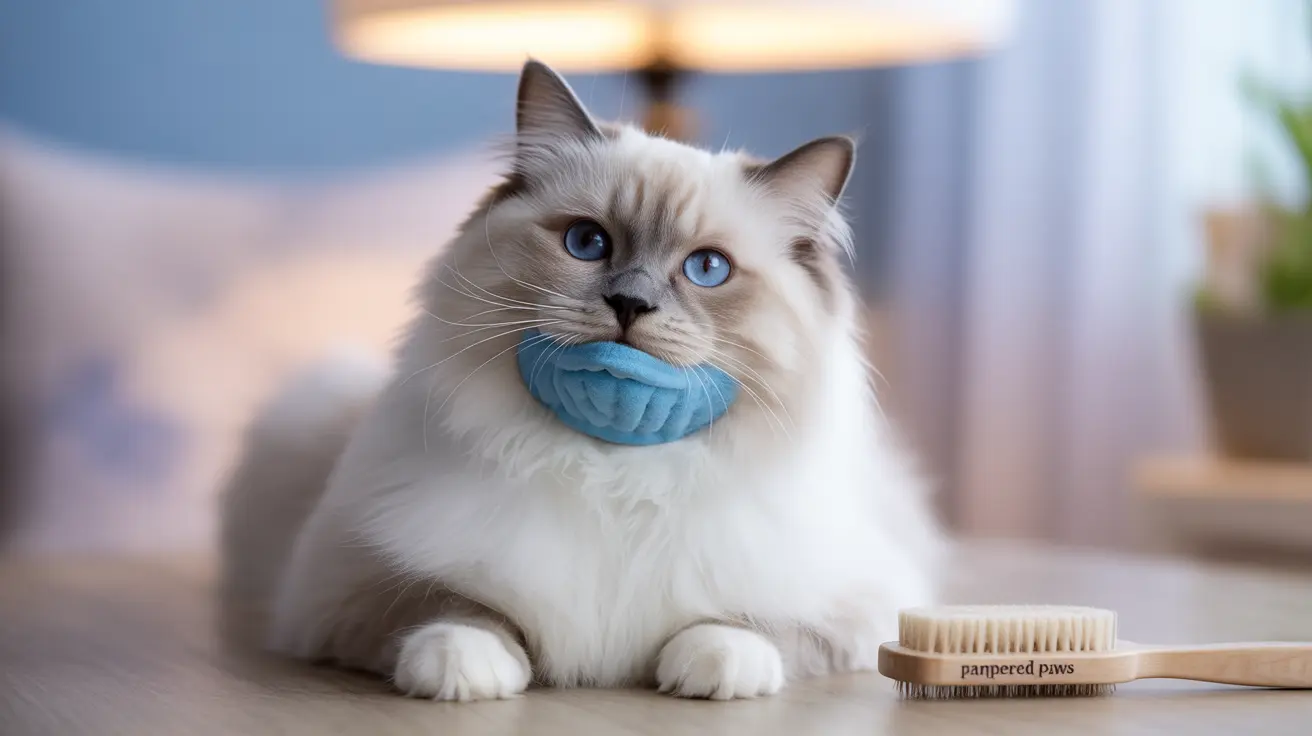When it comes to safely handling cats during grooming sessions, veterinary visits, or medical procedures, cat muzzles can be an essential tool. Whether you're a professional groomer or a pet parent, understanding how to properly use and choose a cat muzzle for grooming is crucial for both your safety and your feline friend's comfort.
In this comprehensive guide, we'll explore everything you need to know about cat muzzles, from selecting the right type to ensuring proper fit and safe usage. Let's dive into the world of feline restraint tools and discover how to make grooming sessions safer and more manageable for everyone involved.
Understanding Cat Muzzle Types and Their Uses
Cat muzzles come in several distinct styles, each designed for specific situations and cat temperaments:
Fabric and Nylon Muzzles
These lightweight options are the most common and affordable. They typically feature adjustable straps or Velcro closures, making them easy to put on and remove. Most fabric muzzles cover both the mouth and eyes, which can help calm anxious cats during grooming procedures.
Cone-Shaped Softie Muzzles
Made from durable materials like Kevlar-canvas blends, these muzzles maintain their shape while providing excellent airflow. They're particularly popular among professional groomers due to their reliability and comfort.
Mesh and Ventilated Options
These muzzles prioritize breathability and visibility while still providing adequate protection. They're ideal for cats who become more stressed when their vision is restricted.
Essential Features for Safe and Effective Muzzling
Proper Fit and Security
A well-fitted muzzle should be snug enough to prevent removal but never so tight that it impedes breathing. Look for adjustable straps and proper sizing based on your cat's weight and head shape.
Ventilation and Comfort
Adequate airflow is crucial for your cat's safety. Choose muzzles with built-in ventilation features or designs that maintain space around the nose and mouth.
Durability and Materials
Select muzzles made from bite-resistant materials that can withstand regular use and cleaning. High-quality nylon, canvas, or specialized blends offer the best combination of strength and comfort.
Best Practices for Using Cat Muzzles During Grooming
Proper Introduction
Introduce the muzzle gradually in a calm environment, using positive reinforcement and treats. This helps reduce stress when the muzzle is needed for actual grooming sessions.
Time Management
Keep muzzled periods brief, typically no longer than 15-20 minutes. Take regular breaks to prevent overheating and excessive stress.
Monitoring and Safety
Always supervise muzzled cats closely, watching for signs of distress such as rapid breathing, excessive struggling, or unusual vocalization. Remove the muzzle immediately if you notice any concerning behavior.
Frequently Asked Questions
How do I choose the right type of cat muzzle for grooming my pet?
Select a muzzle based on your cat's size, temperament, and the specific grooming tasks needed. Consider factors like breathability, ease of use, and whether your cat tolerates having their eyes covered. Start with a basic fabric muzzle for general use, or consult your veterinarian for specific recommendations.
What are the benefits of using a cat muzzle for grooming and veterinary visits?
Cat muzzles provide safety for both handlers and cats during stressful procedures, prevent biting incidents, and can help calm anxious cats. They allow necessary grooming and medical tasks to be completed more efficiently while minimizing risk to all parties involved.
Can I leave my cat alone while wearing a muzzle, or is supervision necessary?
Never leave a cat unattended while wearing a muzzle. Constant supervision is essential to monitor breathing, stress levels, and ensure the muzzle hasn't shifted into an unsafe position. Muzzles should only be used during active handling or procedures.
How do I properly fit and use a cat muzzle to ensure safety and comfort?
Choose the correct size based on your cat's weight, ensure all straps are secure but not too tight, and check that your cat can breathe freely. The muzzle should not press against the throat or restrict jaw movement entirely. Always follow manufacturer sizing guidelines and fitting instructions.
Are cat muzzles effective in preventing scratching during grooming sessions?
While muzzles are excellent for preventing biting, they do not prevent scratching. Additional restraint methods, such as towel wrapping or professional grooming tools, may be necessary to manage scratching behavior during grooming sessions.
Conclusion
Cat muzzles for grooming are valuable tools when used correctly and responsibly. By understanding the different types available, following proper fitting procedures, and maintaining close supervision, you can make grooming sessions safer and more manageable for both you and your feline companion.
Remember that muzzles should never be used as a long-term solution or substitute for proper handling techniques and patience. With the right approach and tools, you can create a more positive grooming experience while ensuring everyone's safety and comfort.






